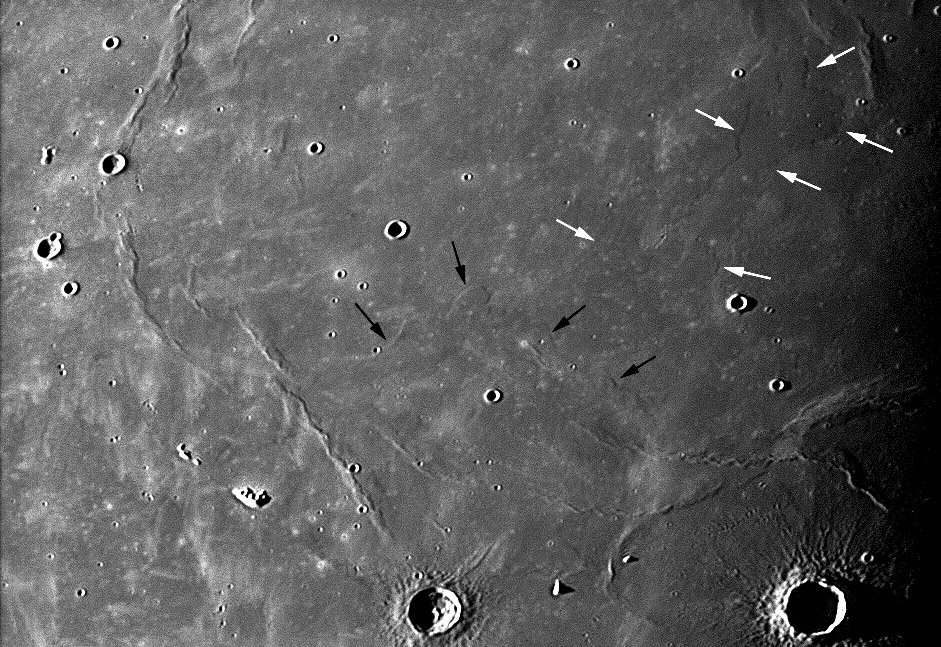Difference between revisions of "October 22, 2010"
| Line 6: | Line 6: | ||
<em>image by [mailto:howardeskildsen@msn.com Howard Eskildsen], Ocala, Florida</em><br /> | <em>image by [mailto:howardeskildsen@msn.com Howard Eskildsen], Ocala, Florida</em><br /> | ||
<br /> | <br /> | ||
| − | The best defined individual lava flows on the Moon extend eastward from near Mount La Hire in western Mare Imbrium. Ewen Whitaker discovered color [http://lpod. | + | The best defined individual lava flows on the Moon extend eastward from near Mount La Hire in western Mare Imbrium. Ewen Whitaker discovered color [http://www2.lpod.org/wiki/July_5,_2009 evidence] for these flows in the late-1950s using composite images taken through blue and red filters, but it was Apollo 15 high resolution photography that really brought them to science's attention. Most [http://www2.lpod.org/wiki/September_5,_2010 subsequent] [http://www.lpod.org/archive/LPOD-2004-07-19.htm images] show the flows in the same region as imaged by Apollo (indicated by the black arrows), but Howard's recent view convincingly documents that the lavas extend considerably further to the east (white arrows). Enhanced color images from Galileo, other spacecraft and the ground show that the young flows do extend this far, but Howard's image is one of the few that depicts flow margins. Good work, Howard!<br /> |
<br /> | <br /> | ||
<em>[mailto:tychocrater@yahoo.com Chuck Wood]<br /> | <em>[mailto:tychocrater@yahoo.com Chuck Wood]<br /> | ||
Latest revision as of 08:35, 28 October 2018
How Long the Flows?

image by Howard Eskildsen, Ocala, Florida
The best defined individual lava flows on the Moon extend eastward from near Mount La Hire in western Mare Imbrium. Ewen Whitaker discovered color evidence for these flows in the late-1950s using composite images taken through blue and red filters, but it was Apollo 15 high resolution photography that really brought them to science's attention. Most subsequent images show the flows in the same region as imaged by Apollo (indicated by the black arrows), but Howard's recent view convincingly documents that the lavas extend considerably further to the east (white arrows). Enhanced color images from Galileo, other spacecraft and the ground show that the young flows do extend this far, but Howard's image is one of the few that depicts flow margins. Good work, Howard!
Chuck Wood
(excuse me, Howard, for over-enhancing your original, more tonally balanced image!)
Technical Details
October 1, 2010, 10:00 UT. 6" f/8 refractor (Explore Scientific Lens) + 2X barlow + W-8 yellow filter + DMK 41AU02.AS
Related Links
Rükl plate 10
Yesterday's LPOD: Eye And Lens
Tomorrow's LPOD: A Flash of Steam
COMMENTS?
Register, Log in, and join in the comments.



